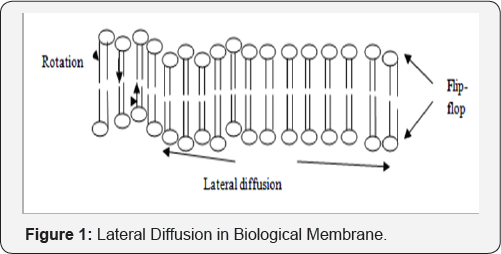Membrane
Thamir Salman Bachari*
Department-Polymer Research Centre-University, Iraq
Submission: February 04, 2017; Published: February 14, 2017
*Corresponding author: Thamir Salman Bachari, Material Science Department-Polymer Research Centre-University, Basrah, Iraq, Email: thamir_bachar@yahoo.com
How to cite this article: Thamir S B. Membrane. Curr Trends Biomedical Eng & Biosci. 2017; 1(4): 555569. DOI: 10.19080/CTBEB.2017.01.555569
Letter to Editor
Biophysics is concerning life at every level from atoms and molecules to cell, organisms and environment [1]. Most of own qualities attributed to living organisms (e.g. movement, growth, reproduction and metabolism) depend either directly or indirectly on membrane. All biological membranes have the same general structure. Membrane contain lipids and protein molecules, in the currently accepted concept of membranes, referred to as the fluid mosaic model, membrane is bimolecular lipid layer (lipid bilayer). Fluid mosaic model is proposed by SJ Singer and GL Nicolson in 1972 decribe the structure of plasma membrane as a mosaic of component-including phospholipids, cholesterol, protein and carbohydrates-that give the membrane a fluid characteristics [2]. The proteins most of that float within lipid layer, largely determine a membranes^ biological functions. Because of the importance of the membranes in biochemical function remainder of, there is a devoted to discussing of their structure and functions. When amphipathic molecules are suspended in water they spontaneously rearrange into structures. As these structures form, hydrophobic groups become buried in water-depleted interface simultaneously, hydrophilic groups become oriented so that they exposure to water. Phospholipids form into bimolecular layers when sufficiently concentrated. This property of phospholipids (and other amphipathic lipids molecules) is the basis of membrane structure. The term fluidity describes the resistance of membrane component to movement. Rapid lateral movement (Figure 1) of lipid molecules is apparently responsible for the proper functioning of many membrane proteins [3].

On the other hand, physics looks for mathematical laws of nature and makes detailed predictions about forces that derive idealized systems. Spanning the distance between complexity of life and the simplicity of physical laws is the challenge of biophysics. Looking for the patterns in life and analyzing that with math and physics in powerful having to gain insight they make detailed predictions that can be tested. As innovations come out of physics and biology labs, biophysicists find new areas explore where they can be apply their expertise, create new tools and learn new things. The work always aims to find out how biological systems work? [1]. Biophysics is wellspring of innovation for our high-tech. economy. The applications of biophysics depend on society's needs. In 20th century, great progress was made in treating disease. Today we are learning more about biology of health and society is deeply concerned about health of our planet. Biophysicists use mathematics, physics, chemistry and biology to study how living organisms work. However, biophysicists are especially interested in the physics and physical chemistry of biological process and make far greater use of quantitative measurements and analysis [4]. For example biophysics application is used ECIS (Electric Cell- Substrate Impedance Sensing) is real-time impedance-based methods to study many activities of cells that grown in tissues culture. These include morphological changes, cell, locomotion and other behaviors directly by the cell cytoskeleton Impedance based-cell monitoring technology was invented by Drs Ivar Giaever and Chareles R. Keese who formed applied Biophysics, Inc. to commercialize ECIS and other Biophysics technologies. ECIS is capable of detecting and quantifying morphological changes in subnanometer to micrometer range. In ECISR a small alternating current (I) is applied across the electrode pattern at the bottom of ECISR arrays (direct current cannot be used). This results in a potential (V) across the electrode that is measured by ECISR instruments. The impedance (Z) is determind by Ohm^s law Z=V/I. When cells are added to ECISR Arrays and attached to the electrodes, they act as insulators increasing the impedance. As cells grow and cover the electrodes, the current is impeded in a manner related to the number of cells covering the electrodes, the morphology of the cell and the nature to cell attachment [5]
References
- What is biophysics? Biophysical Society (2017) India.
- Boundless (2007) "Fluid Mosaic Model.” Boundless Biology Boundless.
- T Mckee, JR Mckee (2003) Biochemistry, The Molecular Basic of Life. Mc Graw Hill, Higher Education, (3rd edn), pp. 928.
- Sean O, iley (2007) Biophysics, Prezi Inc Terms.
- EC1S (2007) Quantifying Cell Behavior, Applied Biophysics Inc., Newyork, USA.






























